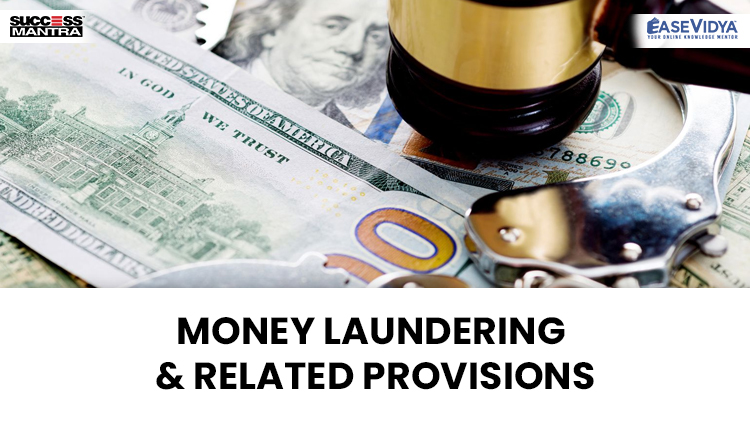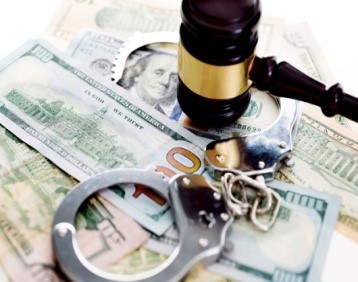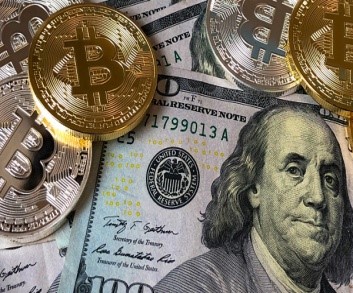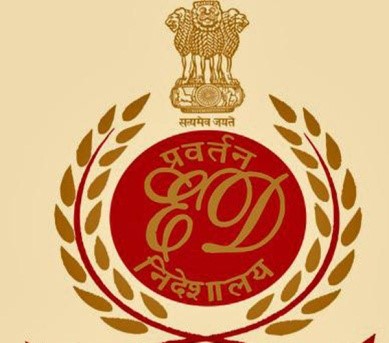
MONEY LAUNDERING AND RELATED PROVISIONS
MONEY LAUNDERING & RELATED PROVISIONS
Delhi Health Minister Satyender Jain has been sent to Enforcement Directorate custody till June 9th in an alleged money laundering case. He was arrested by the Enforcement Directorate in a case connected to hawala transactions related to a Kolkata-based company on May 30, 2022. The Enforcement Department attached properties worth almost Rs 4.81 crore of the family and companies owned and controlled by the Delhi Minister in April 2022.

Current Affairs Notes By Success Mantra Coaching Institute GTB Nagar Delhi CLICK HERE
WHAT IS MONEY LAUNDERING?
Money laundering is concealing or disguising the identity of illegally obtained proceeds so that they appear to have originated from legitimate sources. It is frequently a component of other, much more serious, crimes such as drug trafficking, robbery or extortion. According to the IMF, global Money Laundering is estimated between 2 to 5% of World GDP.
HOW MONEY LAUNDERING WORKS?
It involves three steps: placement, layering and integration. Placement puts the "dirty money" into the legitimate financial system. Layering conceals the source of the money through a series of transactions and bookkeeping tricks. In the case of integration, the now-laundered money is withdrawn from the legitimate account to be used for criminal activities.
PREVENTION OF MONEY LAUNDERING (PMLA) ACT
- It forms the core of the legal framework put in place by India to combat Money Laundering. The provisions of this act are applicable to all financial institutions, banks (Including RBI), mutual funds, insurance companies, and their financial intermediaries.
- PMLA (Amendment) Act, 2012: Adds the concept of ‘reporting entity’ which would include a banking company, financial institution, intermediary etc. PMLA, 2002 levied a fine up to Rs 5 lakh, but the amendment act has removed this upper limit. It has provided for provisional attachment and confiscation of property of any person involved in such activities.
PRAVAHINI Current Affairs Notes By Success Mantra Coaching Institute GTB Nagar Delhi CLICK HERE
FOREIGN EXCHANGE MANAGEMENT ACT, 1999
- The legal framework for the administration of foreign exchange transactions in India is provided by the Foreign Exchange Management Act, 1999. Under the FEMA, which came into force with effect from 1st June 2000, all transactions involving foreign exchange have been classified either as capital or current account transactions.
- Current Account Transactions: All transactions undertaken by a resident that do not alter his / her assets or liabilities, including contingent liabilities, outside India are current account transactions.
- Example: payment in connection with foreign trade, expenses in connection with foreign travel, education etc.
- Capital Account Transactions: It includes those transactions which are undertaken by a resident of India such that his/her assets or liabilities outside India are altered (either increased or decreased).
- Example: investment in foreign securities, acquisition of immovable property outside India etc.

WHAT IS ENFORCEMENT DIRECTORATE (ED)?
It is a law enforcement agency and economic intelligence agency responsible for enforcing economic laws and fighting economic crime in India. One of the main functions of ED is to Investigate offences of money laundering under the provisions of Prevention of Money Laundering Act, 2002(PMLA). It can take actions like confiscation of property if the same is determined to be proceeds of crime derived from a Scheduled Offence under PMLA, and to prosecute the persons involved in the offence of money laundering. India is a full-fledged member of the FATF and follows the guidelines of the same.

GLOBAL EFFORTS TO COMBAT MONEY LAUNDERING
- The Vienna Convention: It creates an obligation for signatory states to criminalize the laundering of money from drug trafficking.
- The 1990 Council of Europe Convention: It establishes a common criminal policy on Money Laundering.
- G-10’s Basel Committee statement of principles: It issued a “statement of principles” with which the international banks of member states are expected to comply.
- The International Organization of Securities Commissions (IOSCO): It encourages its members to take necessary steps to combat Money Laundering in securities and futures markets.
- The Financial Action Task Force: It has been set up by the governments of the G-7 countries at their 1989 Economic Summit, has representatives from:
-
- 24 OECD countries
- Hong Kong
- Singapore
- The Gulf Cooperation Council
- The European Commission
TEST YOURSELF
Q.1 'An offence of Money Laundering involves 3 steps'. Consider the given options & state which of the following not one of them is?
- Integration
- Concealing: ANSWER
- Layering
- None of the following
Q.2 Consider the given statements in the context of the Enforcement Directorate of India & state which of the following is/are correct?
- Enforcement Directorate (ED) is a law enforcement agency of the Government of India that is responsible for enforcing Economic Laws and fighting Economic Crime.
- It was formed with the purpose of handling Exchange Control Law violations under the Prevention of Money Laundering Act, 1965.
- The Enforcement Directorate has its headquarters in Mumbai and has many regional offices all over the country.
- I & III follows
- II & III follows
- Only I follows: ANSWER
- All of the above
Q.3 Of the following options, which of these countries have recently declared the fugitive businessman 'Mehul Choksi' as a prohibited Immigrant?
- Puerto Rico
- El Salvador
- Costa Rica
- Dominican Republic: ANSWER
Q.4 Which of the following given statements is/are incorrect in the reference to the offence of 'Money Laundering'?
- Money laundering is concealing or disguising the identity of illegally obtained proceeds so that they appear to have originated from legitimate sources.
- According to the European Commission, global Money Laundering is estimated between 2 to 5% of World GDP: ANSWER
- Money laundering is punishable with rigorous imprisonment for a minimum of 3 years and a maximum of 7 years and Fine.
- None of the above
Q.5 With the reference to the Punjab National Bank (PNB) Scam, which of the following given statements is/are correct?
- India’s Punjab National Bank (PNB), the largest public sector lender, stunned the country’s financial sector when it announced a scam in 2018
- By far the biggest ever detected by an Indian bank, the PNB fraud involved Mehul Choksi, and the main accused Vijay Mallya, who are absconded from the country before news of the scam came through.
- Choksi and his nephew Nirav Modi are wanted for allegedly siphoning Rs 13,500 crore of public money from the state-run Punjab National Bank (PNB) using letters of undertaking: ANSWER
- None of the above












NikeWella
dark web market links <a href="https://mydarknetmarketlinks.com/ ">dark web links </a> darkweb marketplace